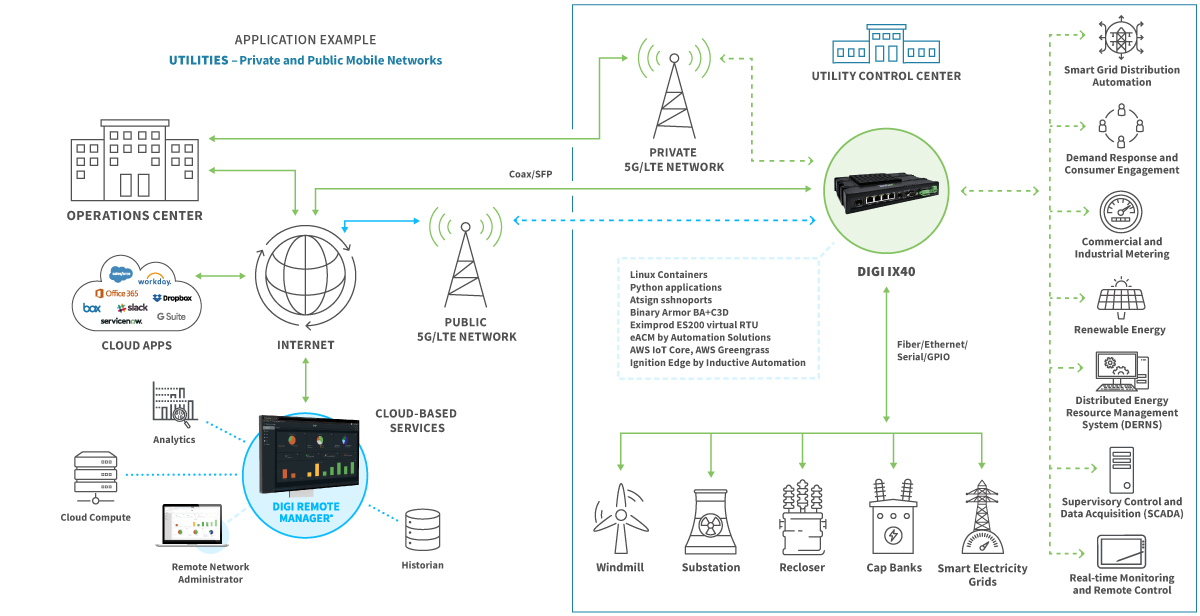What is Edge Computing?
Edge computing is a distributed computing paradigm that brings computation and data storage closer to the source of data generation. Instead of relying solely on centralized cloud servers, edge computing processes data at the “edge” of the network, closer to devices like sensors, IoT gateways, and mobile devices. This proximity reduces latency, improves bandwidth efficiency, and enables real-time processing of data, creating opportunities for businesses across diverse sectors.
Reduced Latency and Improved Response Times
One of the most significant advantages of edge computing is its ability to drastically reduce latency. Imagine a manufacturing plant using sensors to monitor equipment performance. With cloud-based processing, data from these sensors needs to travel to a distant server, be processed, and then send instructions back. This back-and-forth can take valuable time, potentially leading to production delays or even equipment damage. Edge computing, however, processes this data locally, allowing for immediate responses and adjustments, significantly improving efficiency and minimizing downtime.

Enhanced Data Security and Privacy
Moving data processing closer to the source also enhances data security. Less data needs to travel across the network, reducing the risk of data breaches and unauthorized access. This is especially important for businesses handling sensitive information like financial data, medical records, or personal customer details. Edge computing allows for local data encryption and processing, minimizing the potential impact of security vulnerabilities.
Enabling Real-Time Analytics and Decision Making
The ability to process data in real-time is transforming how businesses operate. With edge computing, organizations can gain immediate insights into their operations, allowing for faster decision-making. For example, a retail store can analyze customer traffic patterns in real-time using edge-enabled cameras and adjust staffing levels accordingly. This agility and responsiveness provide a significant competitive advantage in today’s fast-paced business environment.
Cost Savings and Improved Efficiency
While implementing an edge computing infrastructure might involve some upfront investment, the long-term cost savings can be substantial. By reducing the amount of data transmitted to the cloud, businesses can lower bandwidth costs and reduce their reliance on expensive cloud storage. The improved efficiency resulting from real-time analytics and reduced latency also translates into significant cost savings across various operational areas.
Scalability and Flexibility for Growing Businesses
Edge computing offers scalability and flexibility, making it an ideal solution for businesses of all sizes. As a business grows, its edge infrastructure can easily be expanded to accommodate increased data volumes and processing requirements. This scalability ensures that businesses can adapt to changing needs without significant disruption or costly overhauls. The modular nature of edge deployments also allows for tailored solutions to specific business needs, regardless of size or industry.
Powering Innovation in Various Industries
The applications of edge computing are vast and continue to expand across various industries. In manufacturing, it enables predictive maintenance and optimizes production processes. In healthcare, it facilitates remote patient monitoring and improves the speed and accuracy of diagnoses. In the transportation sector, it enhances autonomous driving capabilities and improves traffic management. The versatility of edge computing is fueling innovation and driving significant improvements in efficiency and productivity across a wide range of sectors.
Addressing the Challenges of Edge Computing
Despite its numerous advantages, edge computing also presents some challenges. Managing and maintaining a distributed network of edge devices can be complex, requiring robust management tools and skilled personnel. Ensuring data consistency and synchronization across multiple edge locations also requires careful planning and implementation. Addressing these challenges requires a strategic approach that balances the benefits of edge computing with the practical considerations of implementation and maintenance.
The Future of Edge Computing in Business
The future of edge computing in business is bright. As technology continues to advance and costs decrease, edge computing will become increasingly prevalent, empowering businesses to achieve greater efficiency, innovation, and competitiveness. The integration of artificial intelligence (AI) and machine learning (ML) at the edge will further enhance the capabilities of edge computing, driving even more transformative changes across various industries. The power of edge computing to process data closer to the source is reshaping the business landscape, paving the way for a more connected, responsive, and efficient future. Click here to learn about enterprise edge computing solutions.




